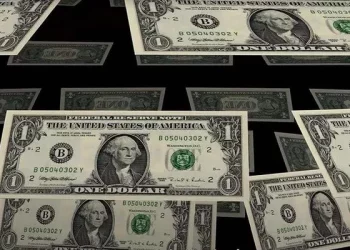In Wednesday’s European session, the Pound Sterling (GBP) stabilized around the 1.2450 mark against the US Dollar (USD), following a robust rebound from its recent five-month low near 1.2300 earlier in the week. The GBP/USD pair capitalized on the strength of United Kingdom preliminary PMI figures for April and a notable correction in the US Dollar.
According to the S&P Global/CIPS report released on Tuesday, new business volumes experienced a notable increase across the private sector in April. The expansion, which marked the most robust growth since May 2023, was predominantly driven by the service industry, whereas manufacturers encountered a moderate decline in order books.
The surge in new business volumes typically indicates a positive consumer spending outlook, potentially leading to inflationary pressures and providing leeway for the Bank of England (BoE) to postpone interest-rate cuts. This scenario augurs well for the Pound Sterling.
The USD faced pressure after S&P Global’s unexpected revelation of weak preliminary US PMI data for April. The Manufacturing PMI dipped below the 50.0 threshold, indicating a contraction in the sector, while the Services PMI saw a significant drop to 50.9. The US Dollar Index (DXY), which gauges the USD’s value against six major currencies, struggled to find solid ground near 105.70.
Market analysts anticipate further upside for the Pound Sterling against the USD, buoyed by multiple favorable factors. The uncertainty surrounding the timing of potential interest rate reductions by the Bank of England, coupled with robust preliminary PMI data for April, has bolstered demand for the GBP.
Traders are divided between the June and August policy meetings as the likely commencement of the easing cycle. James Smith, an economist at ING Financial Markets, noted, “It is between June and August… leaning slightly towards August,” citing services inflation as a crucial factor influencing the decision.
Divergent viewpoints from BoE policymakers add to the ambiguity regarding the timing of the first interest rate cut. While BoE deputy governor Dave Ramsden expressed confidence in inflation returning to the 2% target, policymaker Jonathan Haskel voiced concerns about persistent inflation amid tight labor market conditions.
In terms of technical analysis, the Pound Sterling’s recovery from the recent low demonstrates resilience, with the GBP/USD pair hovering around the 1.2450 level. However, upside potential may be constrained near the supply zone of 1.2500-1.2520, while the 20-day Exponential Moving Average (EMA) suggests a weak near-term outlook for the Cable.
The rebound in the 14-period Relative Strength Index (RSI) to 40.00 could serve as a resistance level, although a breakout above this threshold may signal a bullish reversal.

























